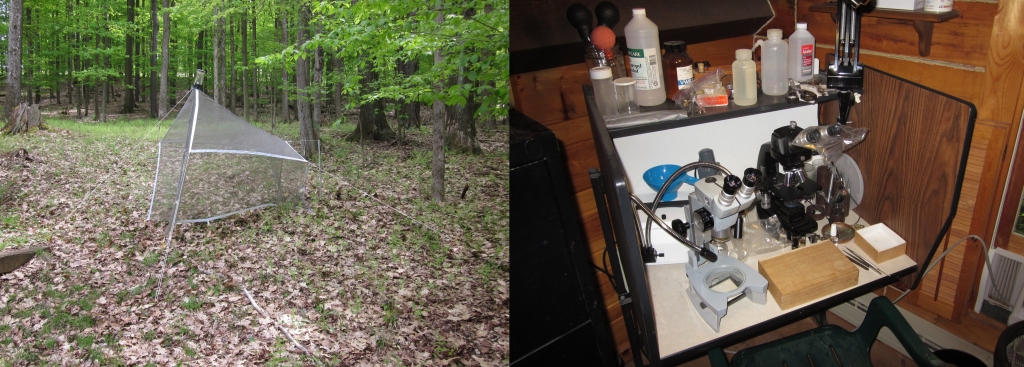Glossary
November 17, 2012Today I added a Glossary of terms one is likely to find when perusing the asilid literature. It is specifically oriented towards the older descriptive literature. Most of the terms are morphological. The glossary itself is an amalgam of several public-domain works, edited, modified, and tweaked for Laphriini. The tweaking will eventually be extensive. The glossary now, however, includes much that it shouldn't, or is of limited relevance. Further, it lacks many things that should probably be present. These include many that I know about, and many more that I don't. Although the glossary is manifestly incomplete and inadequate, I will be improving it as can.
This site much needs a glossary. For someone with a general background neither the original descriptions nor my redescriptions are self explanatory. You have to start somewhere. Things have a habit of never getting done unless you put them out for public consumption. But once started they more-or-less write themselves, bit-by-bit. This is my philosophy for the entire website. With this glossary, eventually my mixing, tweaking, and editing of the original works will be so extensive that neither the overall result or the individual entries will bear any resemblence to to their one-time templates and props.
Further, many of the entries will rely heavily on my personal experience; dry-as-dust is not my goal, and hopefully won't be the issue. In short, the entries may include what others would describe as the educated opinion of yours truly. It is this just sort of opinion that I find most interesting when reading old literature.
One thing I may try to add is the derivation of each term from Classical Greek or Latin. I don't pretend to know either language. But when such derivations are offered I personally find them extremly helpful. I find this more true of words with Latin derivations than of those with Greek ones, perhaps because the Greek alphabet is so foreign -- to me it might as well be heiroglyphics. Also English includes a large number of Latinized words that are familiar to everyone. For example, the word just used, "familiar," comes from the Latin for "family." But late nineteenth-century papers cite Greek derivations quite frequently. At the time knowing Classical Greek was seen to be a sign of culture. In other words, derivations were included in papers even when they didn't add anything except snob appeal. Every age seems to have its own absurdities.
BTW, those who are interested in derivations from a biological perspective, cannot do better than by getting the following book:
Jaeger, E. C. 1978. A Source-Book of Biological Names and Terms. Third Edition. Sixth printing. Charles C. Thomas., Springfield Illinois, 323 pp.
I've had this for years, and it has served me well. During that time I've acquired and gotten rid of many other Greek and Latin dictionaries. They are all gone in fact except for Yaeger; none were so well written and understandable, with the possible exception of Sterne's Botanical Latin if you happen to be interested in plants.
The glossary is not now illustrated. I am not sure now if illustrations are needed, or how I might add them if I decide they are. It is something eventually I will be considering.
As with the previous sections, the glossary is now accessible from bottom of the introductory page
Over the past week I've also began adding annotations to the Bibliography. This too is far from complete. But it is far enough progressed that I added the word "Annotated" to the title.
I added one reference as well--Mazzarolo (1999). This is a phylogenetic analysis of the subfamily Laphriinae, done as a thesis. I can't read anything except the abstract; but it is none-the-less pertinent for the many labelled illustrations. Apparently it includes little on tribe Laphriini in either the Palearctic or Nearctic Regions. I'd like to thank Fritz Geller-Grimm for sending me a copy.


 Digg
Digg
 Facebook
Facebook
 StumbleUpon
StumbleUpon
 LinkedIn
LinkedIn
 Twitter
Twitter
 Email
Email